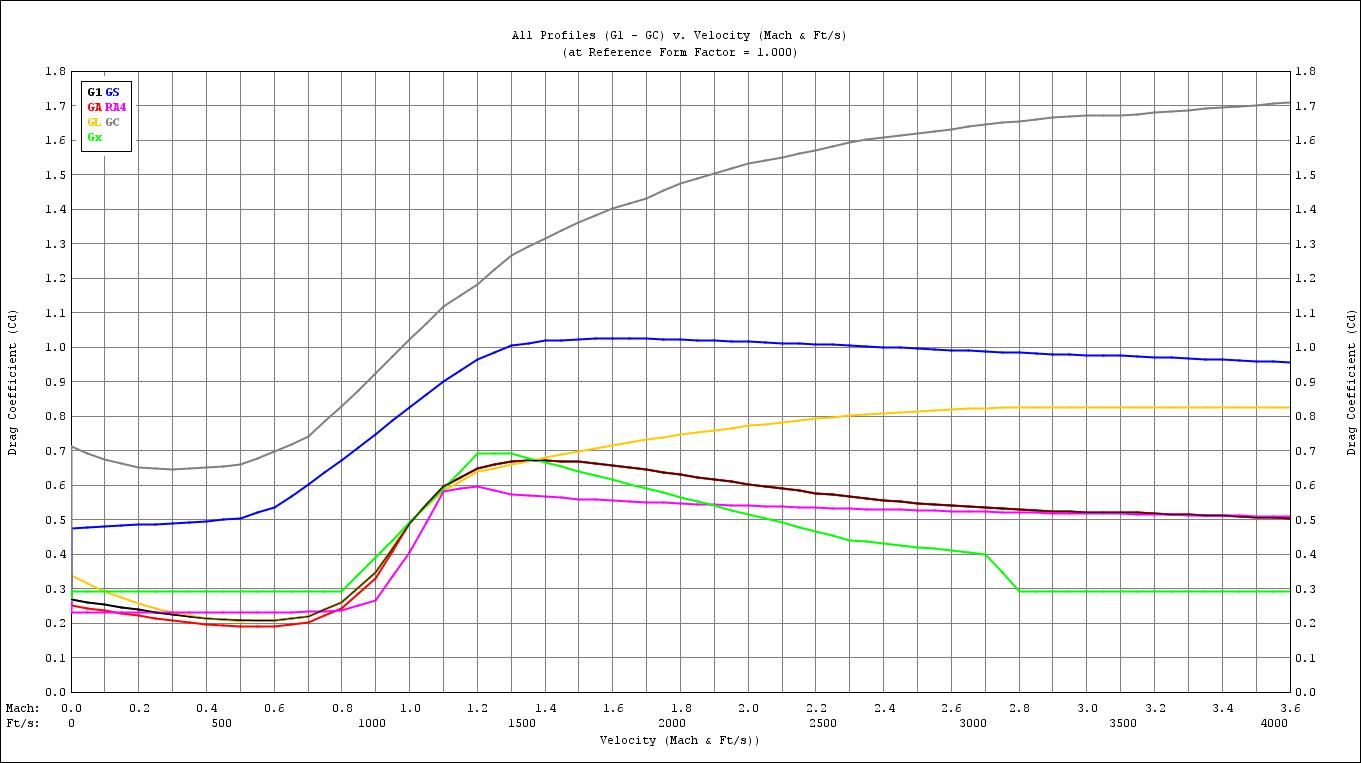I just downloaded the latest version of ChairGun Pro Version 4.1.6, and it has an App that is pretty cool.... You can look at, and modify, the Ballistics Profile of projectiles, including the ability to create your own custom profile.... There are 7 profiles in the program, and the plots show the Drag Coefficient vs. the velocity, as follows:
A couple of comments.... These are a plot of the Cd, which shows how the drag varies with velocity.... To calculate the ACTUAL drag of the bullet, you need other information, such as the Sectional Density and Velocity.... The Ballistics Coefficient is a combination of the Cd and the SD....
G1 (black) is the old standard artillery shell shape used for years....
GA (red) is a profile for airgun pellets, and is the default profile for the program.... note they have slightly lower drag than the G1 profile in the subsonic range....
RA4 (purple) is a .22LR bullet, which should be a good starting point for round nosed cast bullets in big-bore airguns....
GL (yellow) is for "blunt nose - exposed lead" bullets, which, with no other information, may be useful for cast bullets with a flat (meplat) nose....
GS (blue) is for spheres (roundball)....
GC (grey) is for cylinders....
Gx (green) is the custom profile, which you can modify yourself....
There are a few very important things I get from the above chart, however.... Firstly, the red line shows what happens with typical pellets, in terms of the sharp increase in drag above Mach 0.8 (900 fps).... Secondy, their "typical pellet" is at minimum drag between about 500-800 fps, which leads me to believe the graph was drawn using a round-nose design, as I have measured sharp increases in drag for wadcutters at anything over about Mach 0.6 (650 fps).... Thirdly, you can see the marked similarity in the drag curves for all the different types of projectiles. with the sharp rise in drag in the transonic region between Mach 0.8 - 1.2.... Interestingly, both spheres and cylinders start their upwards drag curve earlier than pellets and bullets, at about Mach 0.6 - 0.7.... and their data on a .22LR shape shows a later transition, starting at about Mach 0.9 (1000 fps)....
Since the BC is proportional to the SD, heavier pellets in a given caliber will have a better BC.... Also, similarly proportioned pellets in a larger caliber will have a better BC because their SD is higher.... However, once again I find compelling evidence to stay below the transonic region, as trying to push velocities into the steep part of the drag curve will just end up in you losing all that hard fought for velocity in the first few yards of flight....
Bob







 Reply With Quote
Reply With Quote